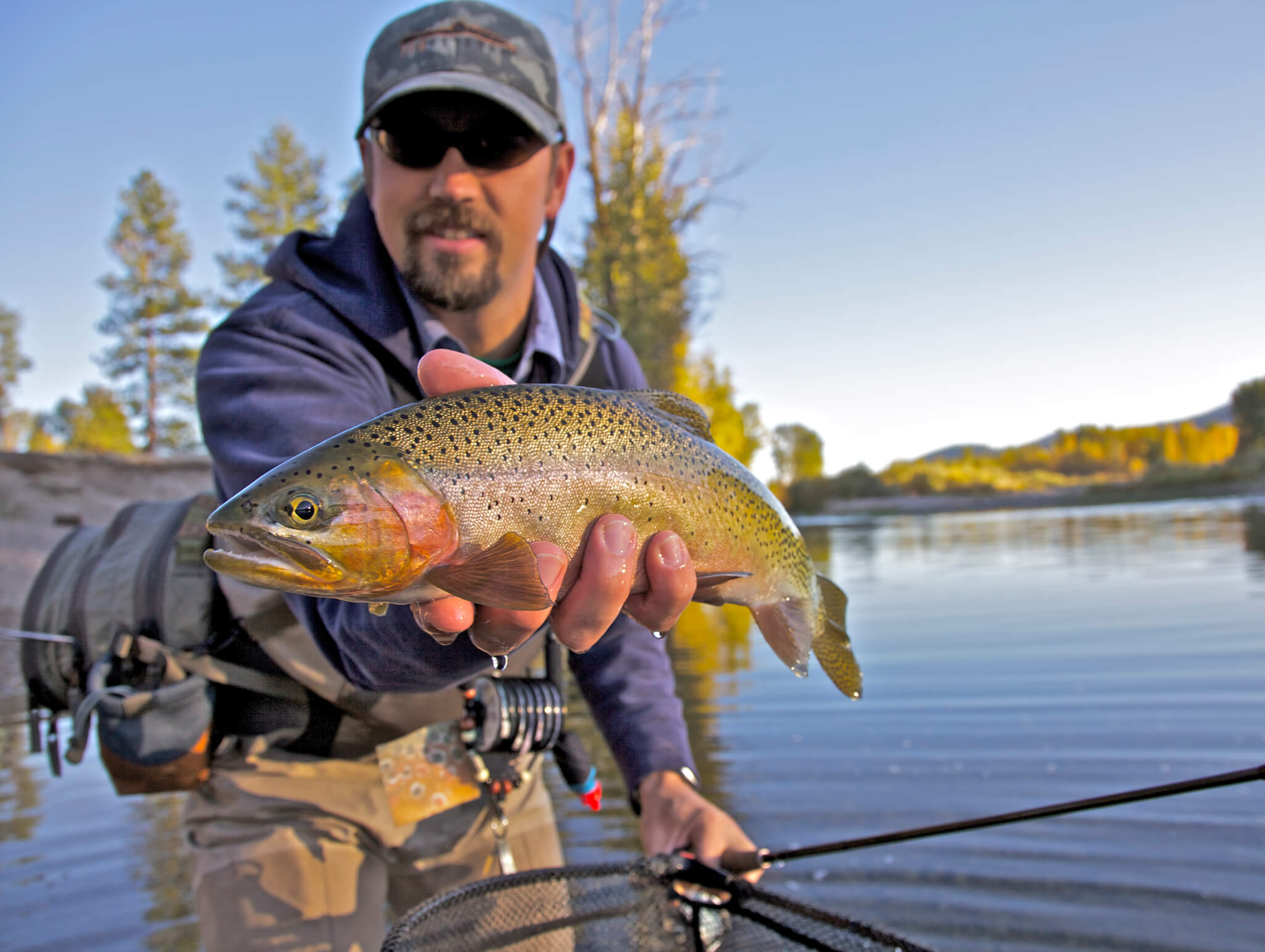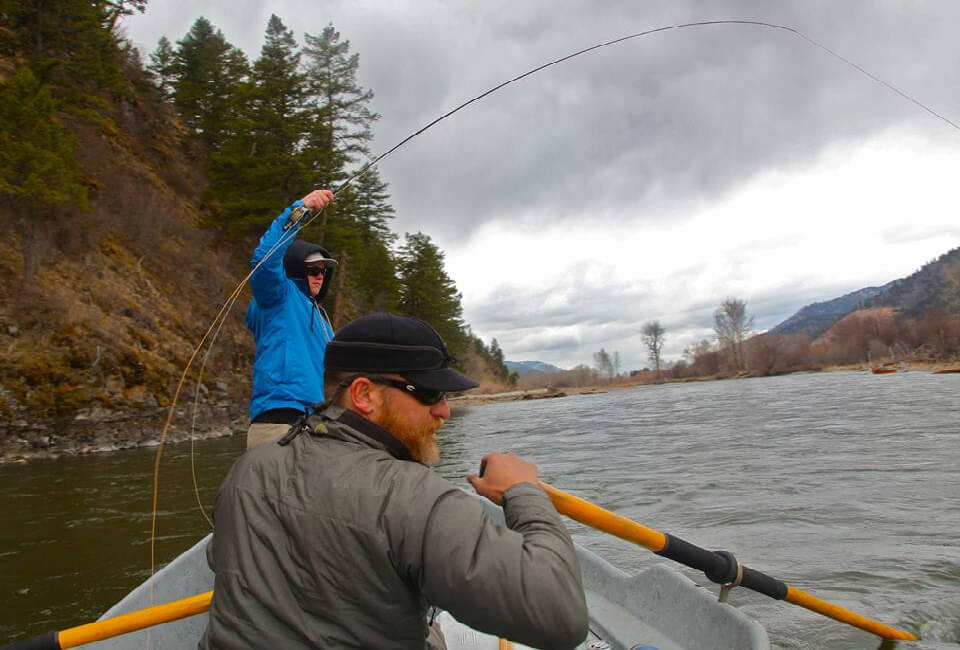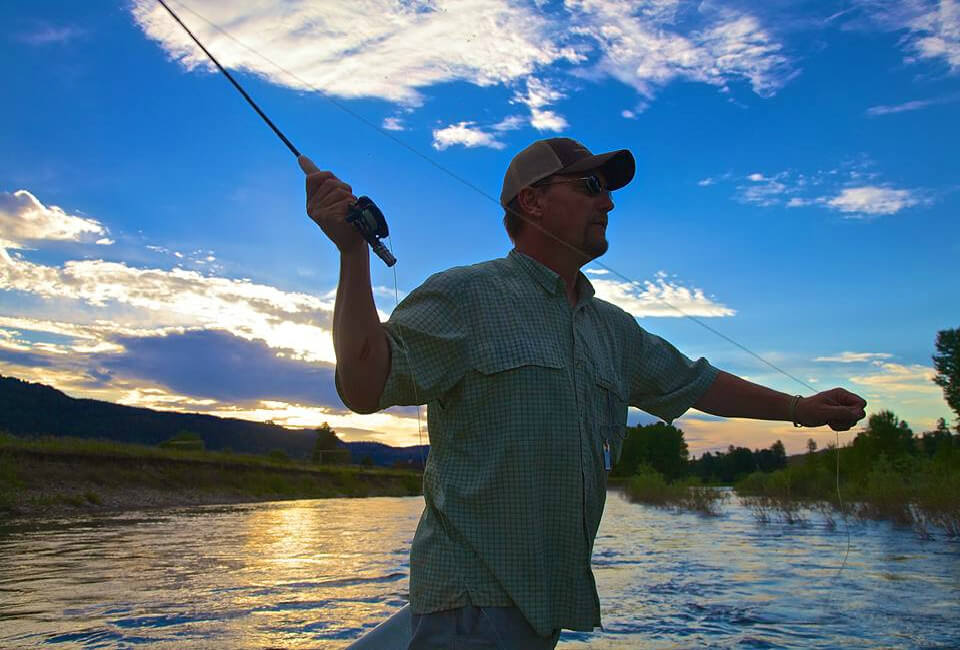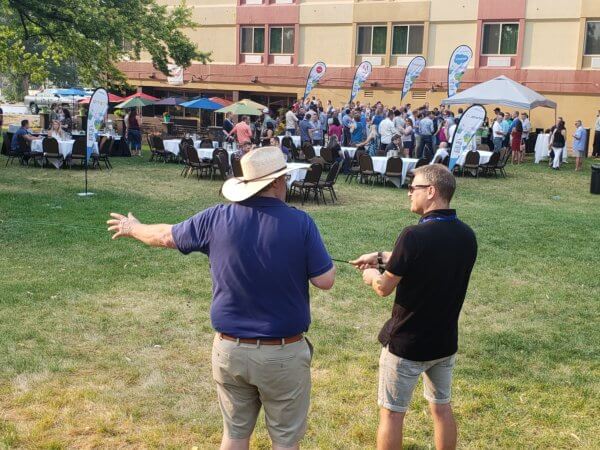How To Cast A Fly Rod
In this section we will breakdown how to cast a fly rod and the basic skills needed to hit the water. Click the boxes at the bottom of this page and start learning.
Fly casting is not an art, it’s a hand skill, like playing shortstop or knitting. Practice makes you better! And you need to practice. NOTHING, repeat NOTHING, positive happens on the water until you learn to cast a fly rod. It needs to be second nature. How can you focus on reading the water, drift and mending if all your focus is on casting.
The worst advice given to those who are learning how to cast a fly rod-
“Don’t bend your wrist.”
Every beginner learning how to cast a fly rod hears this at some point, and it’s the worst advice a novice caster can receive. This is what “don’t bend your wrist” actually means. Properly stated, the tip of the fly rod, during the moment of acceleration as controlled by your wrist, should not travel beyond two set points, one at the 10:00 position and one at the 2:00 position on a clock face. Simply stated, a controlled wrist hinge defines the stopping points. Novices often over-hinge the wrist, causing the rod tip to pass beyond the 10 and 2 points. They’re told, for what should be a cast or two, don’t bend your wrist. This helps limit the rod tip’s movement to 10 and 2, no further and no less. It’s to give the novice a feel for where to stop the rod. But the mind latches onto the simple statement, don’t bend your wrist. And from there, it’s nothing but problems. You MUST bend your wrist while casting. If someone tells you not to bend your wrist when (when, not if) you practice, nod your head, thank them for their sage advice, and promptly ignore them.
Strangely, the worst place to learn how to cast a fly rod is on moving water, especially when just beginning. Moving water requires coordination between left and right hand, to cast and control the line and slack. Too many variables enter the equation on moving water. Find some open space on grass and go there. It takes all the pressure off, because few people catch fish in the grass. You focus on casting mechanics, not how to fish. Can’t fish without learning how to cast a fly rod, so walk before you run.
This is a critical concept in learning fly casting. The fly line must travel as fast on the back cast as it does on the front cast. This is opposite to every sport/activity you’ve ever participated in. Golf, tennis, baseball, spin fishing- the arm or stick goes back slowly and forward quickly. Not so in fly casting. The back cast must be as powerful, if not more powerful, than the front cast. In order to load the fly rod coming forward, the line must be airborne and in motion on the back cast. It takes time to adjust to the new concept of where to add power when fly casting.
Learning fly casting requires a bit of open space to cast. You need about 40 feet in front and behind you. The line travels in both directions, so you need as much space behind as you in front of you.

Start with the basics of fly casting. This is how you hold a fly rod. Reel down, thumb on top. Grip the rod loosely- you’re not trying to compress the cork! The thumb on top grip allows you to apply the most power to your cast.
Take a look at this infographic on setting up to practice fly casting on land. Orient yourself and choose a 10:00 o’clock point and a 2:00 o’clock point. Make sure the points are defined by objects (tree, sign, building window, goalpost) and not an imaginary number on a clock face. You need an actual object in your sight line to tell if the tip of the rod went past.

Now, click here if you’ve done some spinfishing. This information on casting gets you started based on your experience with a spinning rod. If you’ve never held a fishing rod in your hands, click here to see how to make a fly rod work
Click the boxes below to start learning how to cast a fly rod.





